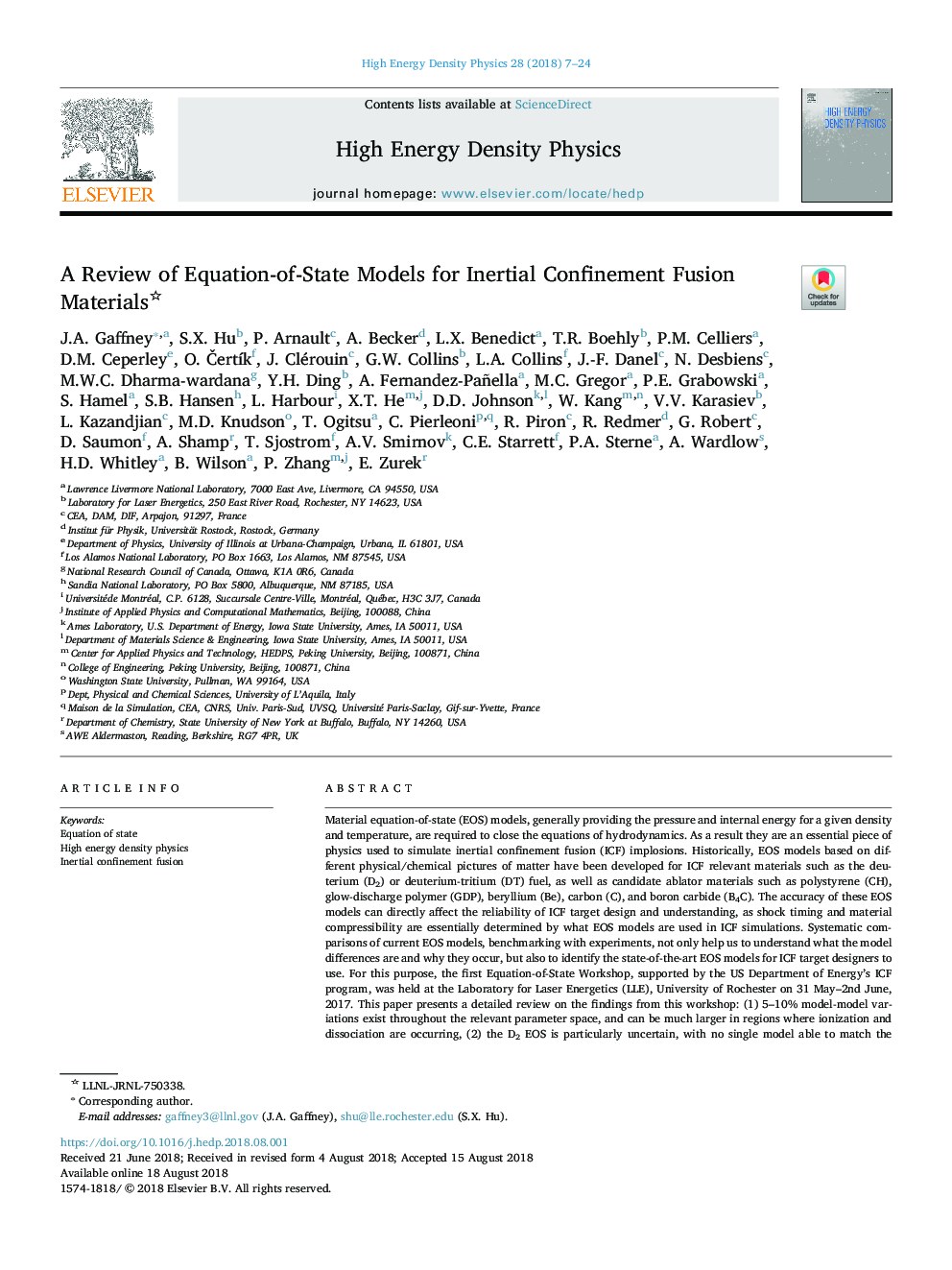| کد مقاله | کد نشریه | سال انتشار | مقاله انگلیسی | نسخه تمام متن |
|---|---|---|---|---|
| 9953744 | 1523439 | 2018 | 18 صفحه PDF | دانلود رایگان |
عنوان انگلیسی مقاله ISI
A Review of Equation-of-State Models for Inertial Confinement Fusion Materials
ترجمه فارسی عنوان
بررسی مدل های معادلات حالت برای مواد فیوژن محصور شده در انتگرال
دانلود مقاله + سفارش ترجمه
دانلود مقاله ISI انگلیسی
رایگان برای ایرانیان
کلمات کلیدی
معادله ایالت، فیزیک تراکم انرژی بالا، همجوشی محصور درونی
موضوعات مرتبط
مهندسی و علوم پایه
فیزیک و نجوم
نجوم و فیزیک نجومی
چکیده انگلیسی
Material equation-of-state (EOS) models, generally providing the pressure and internal energy for a given density and temperature, are required to close the equations of hydrodynamics. As a result they are an essential piece of physics used to simulate inertial confinement fusion (ICF) implosions. Historically, EOS models based on different physical/chemical pictures of matter have been developed for ICF relevant materials such as the deuterium (D2) or deuterium-tritium (DT) fuel, as well as candidate ablator materials such as polystyrene (CH), glow-discharge polymer (GDP), beryllium (Be), carbon (C), and boron carbide (B4C). The accuracy of these EOS models can directly affect the reliability of ICF target design and understanding, as shock timing and material compressibility are essentially determined by what EOS models are used in ICF simulations. Systematic comparisons of current EOS models, benchmarking with experiments, not only help us to understand what the model differences are and why they occur, but also to identify the state-of-the-art EOS models for ICF target designers to use. For this purpose, the first Equation-of-State Workshop, supported by the US Department of Energy's ICF program, was held at the Laboratory for Laser Energetics (LLE), University of Rochester on 31 May-2nd June, 2017. This paper presents a detailed review on the findings from this workshop: (1) 5-10% model-model variations exist throughout the relevant parameter space, and can be much larger in regions where ionization and dissociation are occurring, (2) the D2 EOS is particularly uncertain, with no single model able to match the available experimental data, and this drives similar uncertainties in the CH EOS, and (3) new experimental capabilities such as Hugoniot measurements around 100Â Mbar and high-quality temperature measurements are essential to reducing EOS uncertainty.
ناشر
Database: Elsevier - ScienceDirect (ساینس دایرکت)
Journal: High Energy Density Physics - Volume 28, September 2018, Pages 7-24
Journal: High Energy Density Physics - Volume 28, September 2018, Pages 7-24
نویسندگان
J.A. Gaffney, S.X. Hu, P. Arnault, A. Becker, L.X. Benedict, T.R. Boehly, P.M. Celliers, D.M. Ceperley, O. ÄertÃk, J. Clérouin, G.W. Collins, L.A. Collins, J.-F. Danel, N. Desbiens, M.W.C. Dharma-wardana, Y.H. Ding, A. Fernandez-Pañella, M.C. Gregor,
